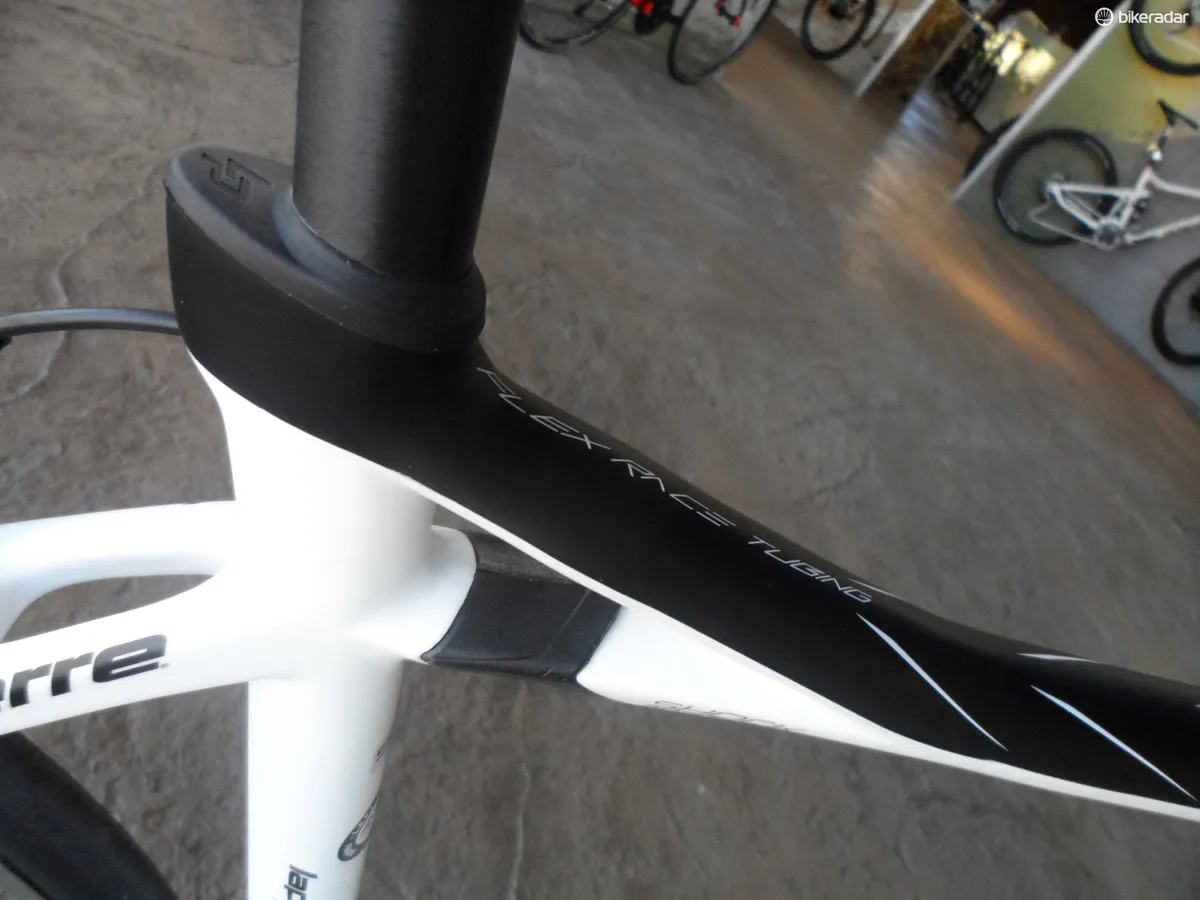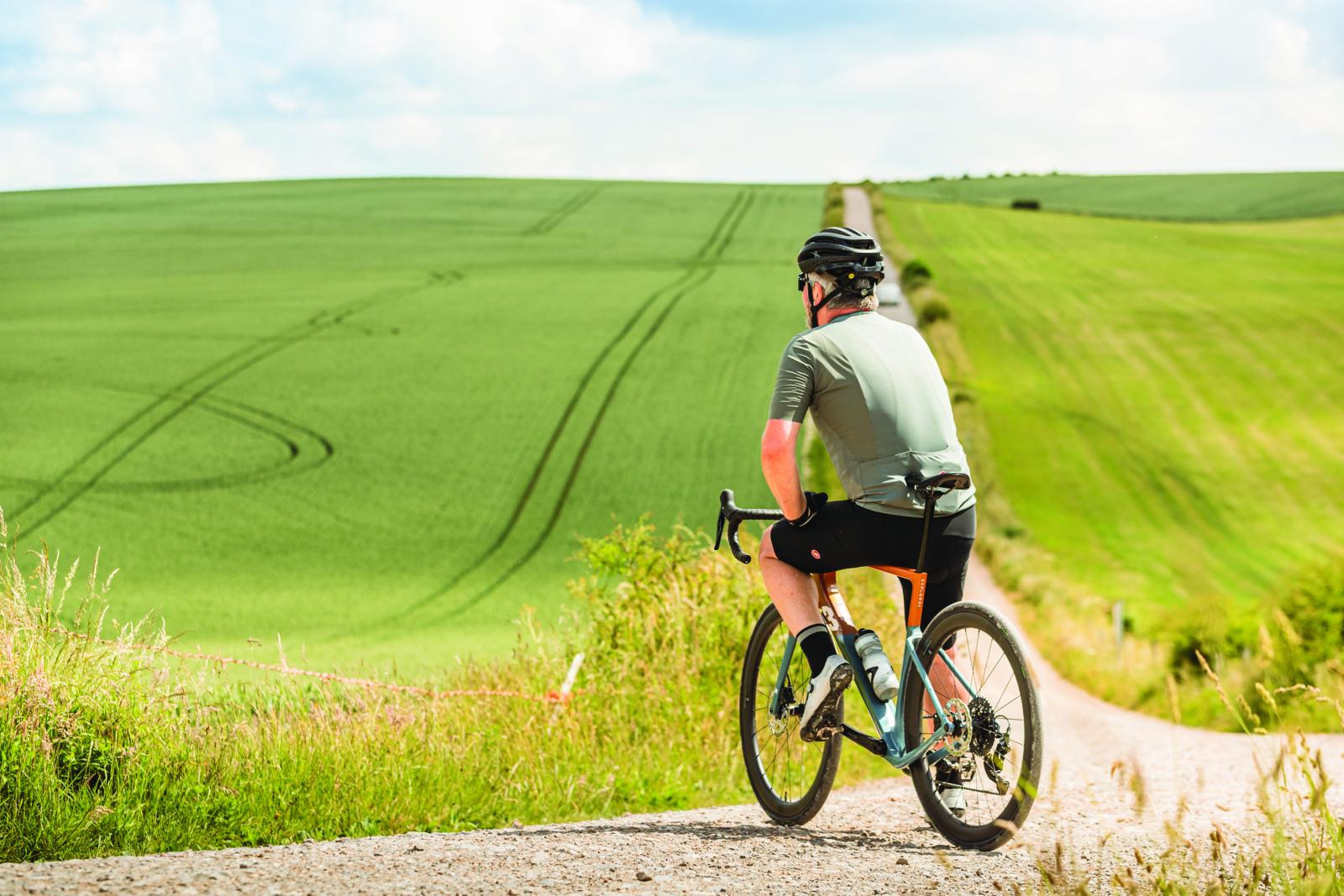Lapierre launched two new platforms for 2015, and reworked the popular endurance bike the Sensium with hydraulic brakes.
The Sensium 500 Disc

The Sensium 500 uses the same frame design as the standard Sensium range, but Lapierre upgraded the carbon's resin in both the fork and rear stays. The newly introduced ITG resin is much better at handling the higher temperatures generated by disc braking, Lapierre claims.
"We wanted to ensure the safety of the disc bike and our R&D team is working towards trying to establish an EN standard for composites on heat dissipation," said Lapierre engineer Rémi Gribaudo.
The Sensium 500 CP Disc is the first 2015 frame we've seen that has adopted the new Shimano disc mount standard 'Flat Mount', though it uses standard Shimano hydraulic brake units with adaptors on the model we were shown.
The Sensium 500 will come with full Shimano Ultegra Di2, WHRX31 wheels, hydraulic brakes with 160mm rotors and 25c Michelin Pro4 clincher. Pricing at this point is in Euros only, set at €3,499, with both UK and US prices still to be confirmed.
The Pulsium

Although the Pulsium was announced earlier in the year and it has seen action already with the FDJ.fr pro team in this year's Tour de France, this was the first time we've seen the complete range.
The Pulsium frame is as stiff as Lapierre's WorldTour Xelium bikes at the bottom bracket, head tube and through the down tube, Lapierre says, but is much more compliant in the rear end for more comfort.
The unique design uses a Y-shaped top tube, with the top section being a flat highly compliant, almost leaf-spring shape, and the bottom section being split with a hollow tube-shaped elastomer binding the separation together. This elastomer bumper controls the flex of the top tube and seat tube, with a claimed 27 percent more flex than the existing Sensium endurance bike. The flexible design is also carried through into the slightly bowed seatstays.

An elastomer bumper controls flex of the top and seat tubes
The range is topped by the Pulsium 700, with full Ultegra Di2 and Kysrium wheels for €4,099 and available with either compact or standard drivetrains. If you'd prefer to buy the bike with Tour-level equipment, then Lapierre's online Ultimate custom program allows you to do that.
The Aircode

The Aircode has also been ridden by FDJ in this year's Tour. The bike was developed by a large team, comprising FDJ riders and mechanics, Lapierre's in-house R&D team, and the Universty of Besançon. Further to this, Lapierre also tested the bikes at the University of Reims with a data-capturing system that monitored vibrations coming through to the rider.
Like Lapierre's time trial machine the Aerostorm, the Aircode was aerodynamically developed and tested between the ACE wind tunnel at Magny Cours and the velodrome in Roubaix. This was to ensure that the bike not only performed well in the wind, but also underneath the rider too. The bike was developed for nine months before the true field testing began.
Lapierre president Gilles Lapierre explained that the Aircode was designed for FDJ to sit between the out-and-out TT bike, the Aerostorm, and the lightweight Xelius; a bike designed for fast days where the biggest advantage of advanced aerodynamics can be gained.
The frame is designed using aero Kamm Tail shapes. The Kamm Tail is a truncated aerofoil shape that creates a 'virtual aerofoil', allowing designers to maximize aerodynamic benefit while staying within the UCI's 3:1 length-to-width ratio. Lapierre also worked on finessing the shape to further improve the bike's handling and aero performance in crosswinds.
The fork is also aero profiled with a semi-integrated, direct-mount, forward-facing brake. The stem is also semi-integrated into the top tube. At the rear is a semi-integrated Shimano direct-mount brake mounted under the chainstays, though notably the frame retains a standard brake bridge on the seatstays. "Though the underneath brake is better aerodynamically, the mechanics at FDJ asked for a standard brake on the team bikes," Gribaudo said. "The reasons for this are the practicalities of quick wheel changes and that the type of bike stands they use on the road for working on the bikes hold the bike by the fork dropouts and the BB shell; with the under-chainstay brake it is impossible to adjust on the stand. So we kept the standard mount on the frame moulding."








